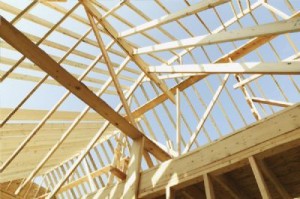
Residential construction spending, which rose 0.9 percent in August, was the bright spot in the Census Bureau's latest report on construction spending.
Residential construction spending increased 0.9 percent from July to August to a seasonally adjusted annual rate of $273.5 billion, according to new numbers out today from the U.S. Census Bureau.
Overall, private construction spending was down by 0.5 percent from July to $562.2 billion, and that decline was probably because of nonresidential construction, which declined 1.7 percent from July to $288.7 billion.
Residential Construction Spending – The Bright Spot
In fact, residential construction spending was the sole bright spot in the Census Bureau’s report, with all the other sectors of construction spending showing declines from July to August:
- Public construction spending was down 0.8 percent from July, with educational construction down 3.4 percent and highway construction down 0.6 percent.
- Altogether, public construction in August was at a seasonally adjusted annual rate of $274.9 billion.
- Total construction spending, for both public and private, was also down month-to-month, falling 0.6 percent; the annual rate of $837.1 billion, though, was 6.5 percent above the $786.3 billion of August 2011.
Construction Industry – Slowly on the Rise
As we last explained in our analysis of the latest residential housing starts numbers, the important thing to look at with construction stats is how they compare to the post-boom lows.
For instance, the Census Bureau noted that for the first eight months of 2012, construction spending has amounted to $545.2 billion thus far, which is a 9.0 percent increase from the same period in 2011.
Also, as Bill McBride pointed out on Calculated Risk, residential construction spending is up 18 percent from last year, and even non-residential spending, which was down from July, is up 7 percent.
Altogether, residential construction spending is down 60 percent from its early-2006 peak, but 23 percent above the post-bubble low, while non-residential is 30 percent below its January 2008 peak and 27 percent above its own low. So although construction spending may seem to be dragging along, it’s actually made quite a bit of progress.
